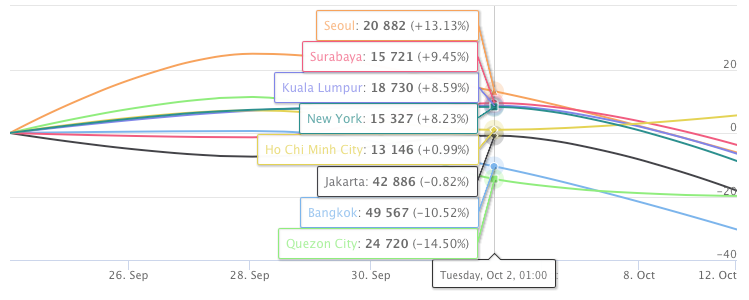How Analytics Make All The Difference In A&R, Marketing
In this piece Chaz Jenkins explains why implementing a broader approach to analytics is key to an effective marketing strategy, and why only looking at past data simply doesn't provide enough information.
____________________________
Guest post by Chaz Jenkins of ChartMetric
On my first day in a new role a few years back, a colleague asked whether I’d like to see the marketing reports. A little later, they handed me a couple of sheets of paper with sales and streaming figures for the previous day, week, month and quarter. I asked if I could also have the marketing reports they’d mentioned, only to be told that what I was already holding them. Hmmmm …
OK, so knowing your listens and sales is critical if you work in a label, especially in a marketing or accounts role. But those numbers only tell a tiny piece of the story. And really, you already know the numbers …
You know the numbers for every track and every artist. No matter how many releases you have, you don’t need a report to tell you the numbers. Because the numbers are always the same. They were the same yesterday, and the day before that. The same every day, for every track. Just one number that always repeats itself and is easy to memorize. And that number is the number ‘not enough’.
Looking at yesterday’s listens doesn’t tell us anything about tomorrow’s marketing.
Somebody is always going to tell you that the number of streams or the number of sales is not enough. And even if they don’t, you should be telling yourself that.

Looking at yesterday’s listens doesn’t tell us anything about tomorrow’s marketing. The most useful marketing or A&R insight we can ever hope to glean from those figures is that somebody did something right and somebody did something wrong. But it doesn’t tell us what those things were, who did them or what else we could have done. Maybe listeners just hated the track … or loved it. How do you know?
When we look at sales and streaming figures, we are looking inwards and backwards. Shouldn’t we be looking forwards and outwards?
That’s where market analytics come in. Market analytics is data concerning an entire market. It is used to identify talent, music and audiences and routes to engage them. It is used to deliver growth. It is the ‘what’ and ‘who’ to connect, not just a report after the fact.
If you only sell bananas, is looking at your sales figures going to tell you how to market shampoo? Unlikely. If it is all you look at, your banana sales will tell you that nobody is even remotely interested in buying shampoo.

By definition, market analytics tell us truths about the marketplace, so we don’t have to rely on assumptions. Using knowledge of the entire marketplace is not new — we’ve always done it, almost intuitively. But the marketplace for recorded music has morphed from one where consumers purchased two products per year, to one where they listen and interact with music hundreds or thousands of times a month.
And that marketplace is globalized and borderless, with more consumption monetized each day than there were CD sales in a decade. Each consumer and their interactions with music are interrelated. The relationships between these billions of datapoints helps determine future exposure, whether that final exposure is being given by a human curator or a set of algorithms.

All the A&R and marketing decisions ever made were data-informed.That ‘data’ was an awareness of the marketplace, of consumers and of music. But in today’s marketplace, assessing the volume of data being created and identifying trends and opportunities is an impossible task for the human mind.
That’s where market analytics come in, ingesting the immense volumes of data that are needed for planning, marketing and A&R. And then knitting these vast datasets together to reveal the trends, trajectories and insight that informs smart decisions and makes you more competitive in the marketplace.
Because the marketplace for music is competitive. Ultra-competitive. If you thought it was competitive in the past, think again.
But then, maybe you’re happy with not enough …
If you haven’t seen chartmetric yet visit www.chartmetric.io The basic service is free of charge. Use the coupon code FREETRIAL7 to get a week’s free access to the premium service